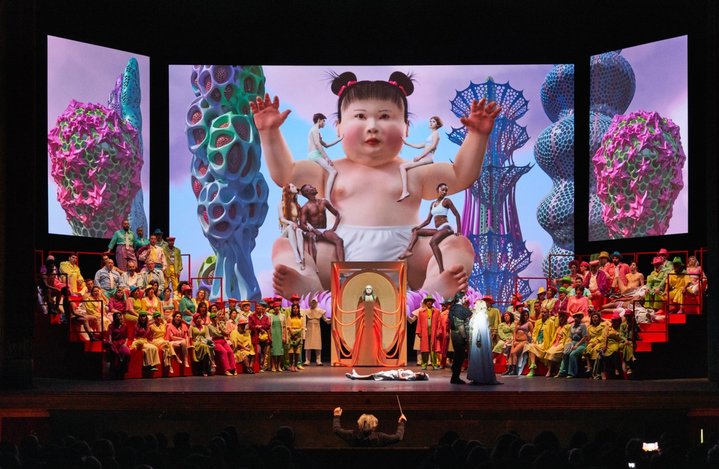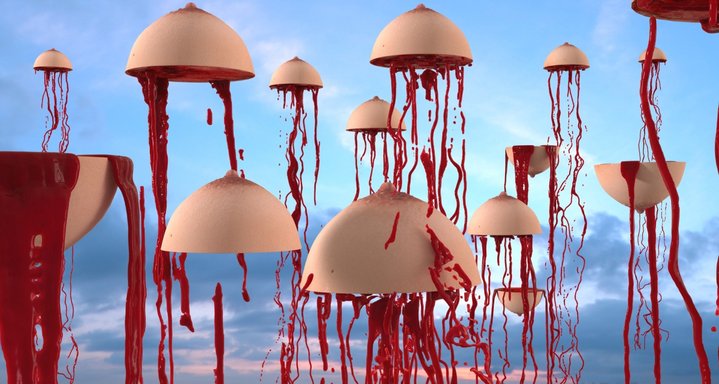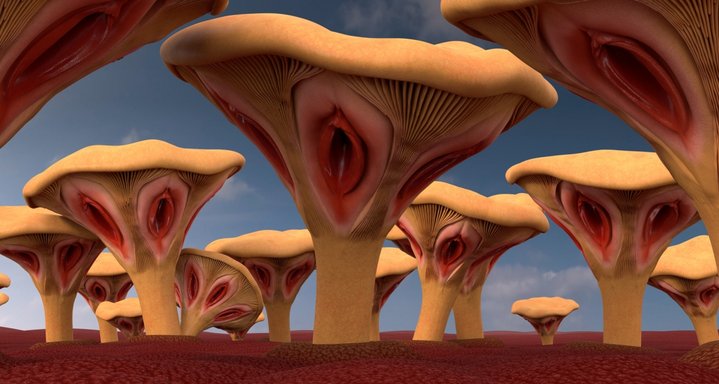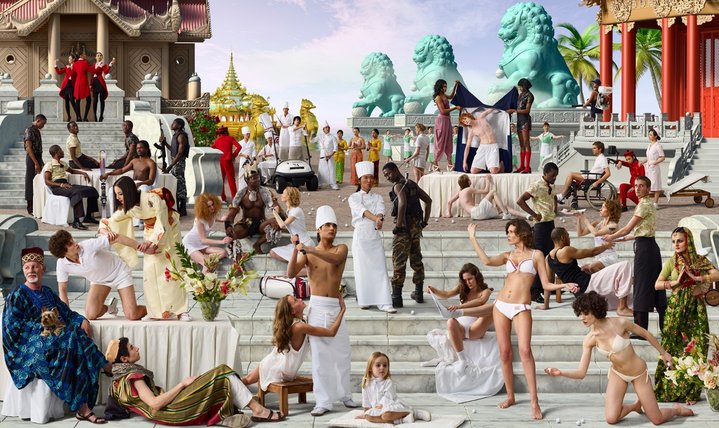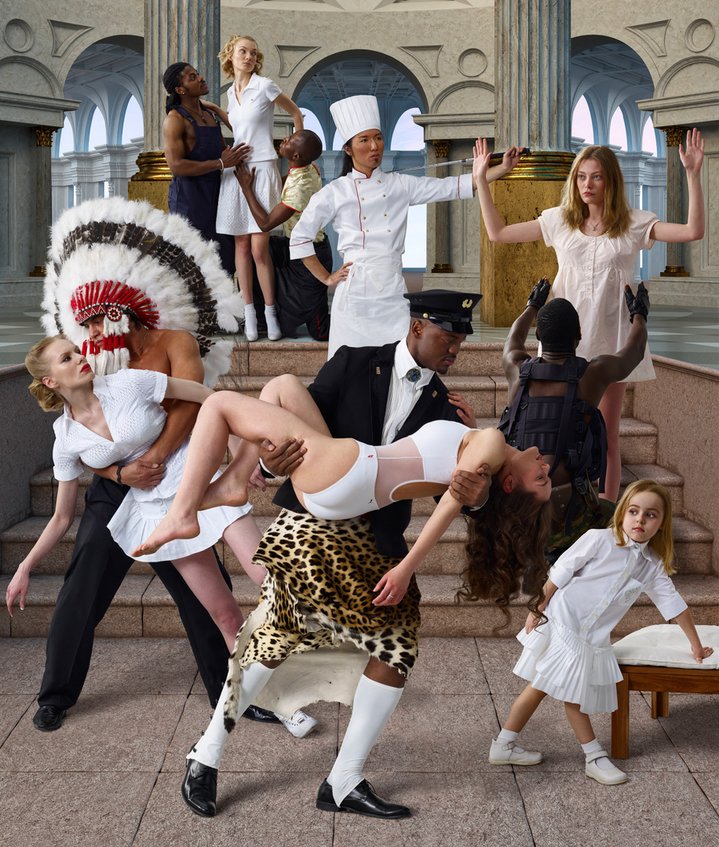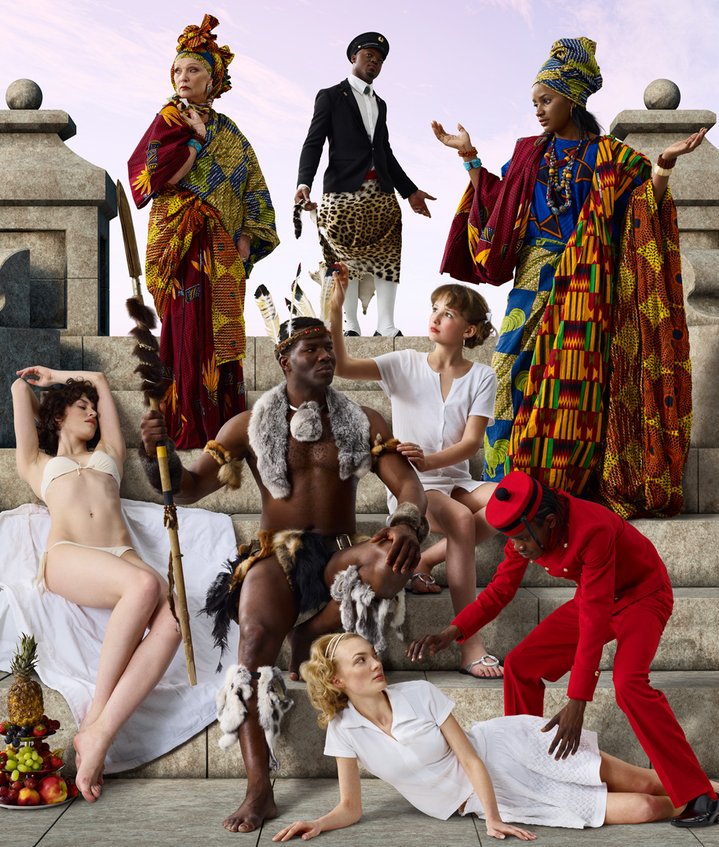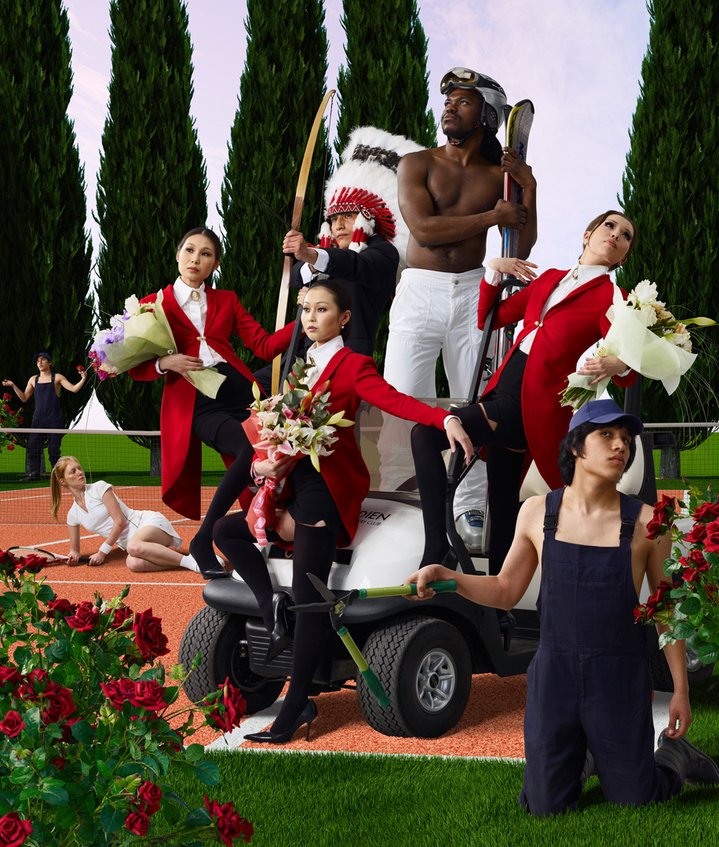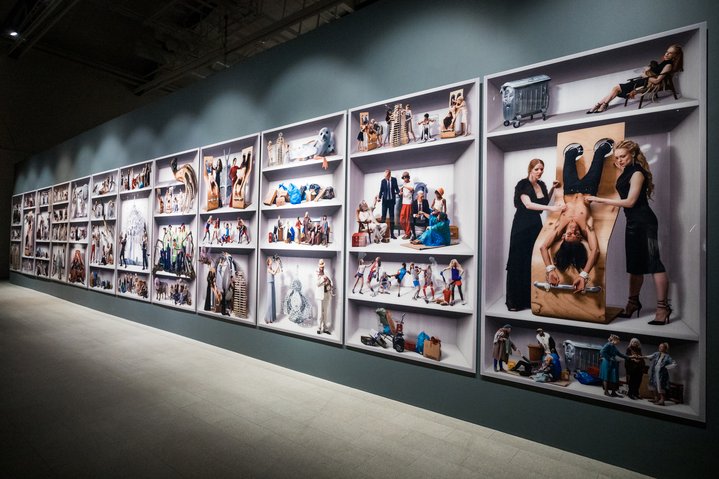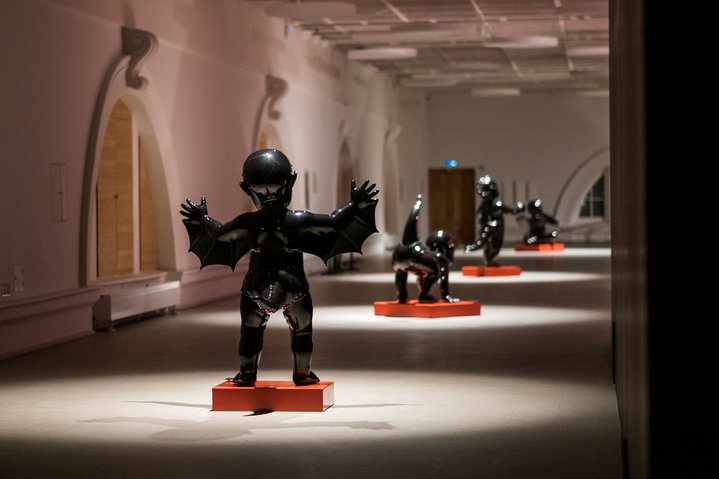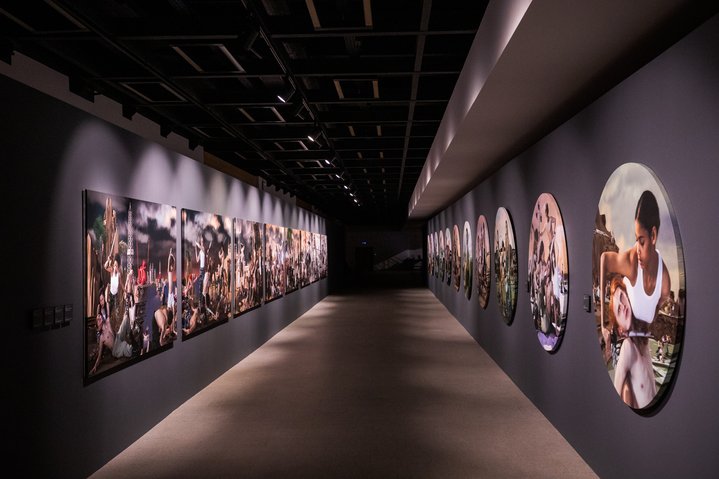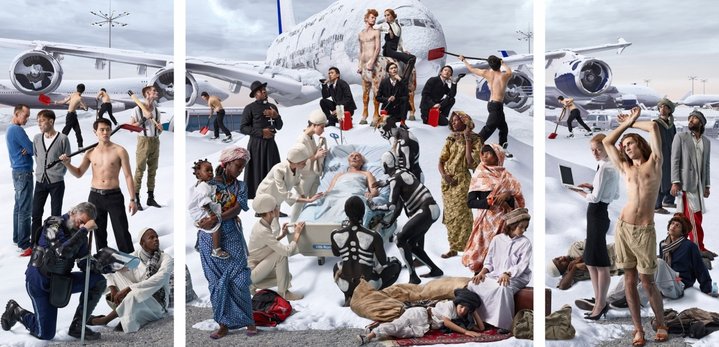AES+F: the veteran quartet of video art visionaries
A group of Russian magicians in search of the future presents two shows at once: one in St. Petersburg and another in Ekaterinburg.
In the beginning, it was Art as a form of magic. To be more precise, elucidates Tatiana Arzamasova (b. 1955), “we are not as practical as a shaman or a tribal magician. Most likely, we are closer to an inspired foreteller from ancient times who channels the will of the Gods”.
Not bad for a start.
She is followed by Lev Evzovich (b. 1958), who elaborates: “I’d rather say that whereas in the past an artist would draw a bison for the tribe to kill it the next day, today you kill the bison first. That is, you live your life, earn money, and then, when you see the pictures that an artist has created, you understand something about your own life: why you have killed the bison, or why you go to work every day. In other words, an artist shows people what they cannot see. And this is a form of magic”.
That is quite a point! One more: “What is success for you?” The question is answered after a pause: Evzovich replies, “Real success is when a work manages to generate a field that is difficult to explain in words, something that goes beyond understanding the message and getting a strong aesthetic emotional experience…a magic field.”
The group’s first such case (which later became a global hit) was “Islamic Project” (1996-2003), a series of snapshots from a future in which Islam has colonized the West (the Guggenheim in New York had by then been turned into a mosque and the Statue of Liberty wore a burqa).
Confronted with the fact that in 2019, there are no Taliban squads chopping hands in Red Square, and when asked if the project could be considered a fake news generator — along the lines of the October 1917 storming of the Winter Palace, as narrated in Sergey Eisenstein’s 1928 film “October” — the artists admit they have no problem if someone were to interpret those images as fake news.
However, this is art we are talking about, not journalism. “Maybe," says Evzovich, “back then [in 1996] we managed to visualise today’s real fears [in 2019].” In fact, after 9/11, the group members started referring to themselves as “witnesses of the future.”
In a recent interview, they uncompromisingly stated that there is no future. The question, then, is: “How can one be witness to the future if there is no future?” The answer is immediate: “We,” says Evzovich, “already live in the future. People don’t see it, but we do. And that is, well, a sort of magic."
The art of AES+F has definitely evolved through the years. The picture of the “Other,” based on the discourse of colonialism and race, was a recurrent theme in their early works, such as the videos “Othello. Asphyxiphilia” (1999-2000, in which a rich white woman is sexually interested in a naked black man), and “Yellow Is Cooking, White Is Eating” (1998, in which a white customer eats a meal made by a Chinese cook).
Today, that dichotomy is over: the countries that were considered marginal have become key players in the world economy. In their latest works, such as “Inverso Mundus” (2015) and “Turandot” (2019), racial imbalance is no longer the message. Turandot, Evzovich explains, is not about a Chinese woman. “She is a princess in a super-empire of the future which has overcome the boundaries of China. It is the empire of matriarchy and technology”.
Binary oppositions are still the key to their works, but they are no longer related to race. The characters populating the worlds of AES+F are now people divided into rich and poor, men and women, old and young, and even people and animals. The location can be anywhere.
Clearly, wherever it might be, it is an uncannily beautiful place. You might even use the word kitsch, if you cannot avoid it. After all, as Arzamasova and Evzovich add, “kitsch is how people live. It is the texture of everyday life. When you work with kitsch, you work with life."
Representing beauty through kitsch is not a simple task when you are creating art. It is what you add to it that makes the difference: like, for example, irony. “It is very important that the language we speak remains between kitsch and beauty. Whatever disrupts this balance is taboo for us,” they add.
AES+F’s works are baroque phantasmagorias made up of people, mutants, beasts, plants, machines and places of all sorts. Be they in the form of video, photograph or sculpture, the viewer’s eye never rests. Is there anything missing, then? Well, it turns out that in AES+F’s world, there is no space for abstraction, nor for planned provocations.
The group is aware that some find their works provocative. This, however, is never their intention. Even when they spent several months visiting prisons to meet women convicted of murder for “Suspects” (1997), or when they dedicated an entire summer to researching morgues in order to photograph dead bodies dressed in haute couture (“Defile," 2000), they never thought it was provocative. The message is what counts although the risk of being misunderstood is always there.
Put it simply: viewers must always keep in mind that each work is an “optimistic tragedy”. For some it might be hard to find the optimism in the tragedy, but they cannot fail to recognise a powerful oxymoron in such a formula. “That’s us. We create oxymora”, summarised Vladimir Fridkes — the +F in the group's name — which he joined in 1995, eight years after its three founders.
Now that one thinks of it, “virtual reality” is also another very strange combination of words. Not an oxymoron, but quite close. It is a space in which AES+F feels at ease. They are sure that those who believe that the real world has been colonised by the virtual one are wrong. It is our world that has entered the virtual one. Smoothly.
“We still live,” explains Evzovich, “like in the ancient times when poets wrote verses and artists made sculptures about unreal things like immortal gods and humans with tails. It is the same now, only the technology has changed”.
As a post-scriptum, I asked Evgeny Svyatsky, the other member of the group, whether as artists, they are somewhere between hippies and punks. “Oh yes. Absolutely!” he replied.
AES+F. Predictions and Revelations
St. Petersburg, Russia
19 July – 22 September
AES+F. Allegoria Sacra
Ekaterinburg, Russia
12 September – 27 October






